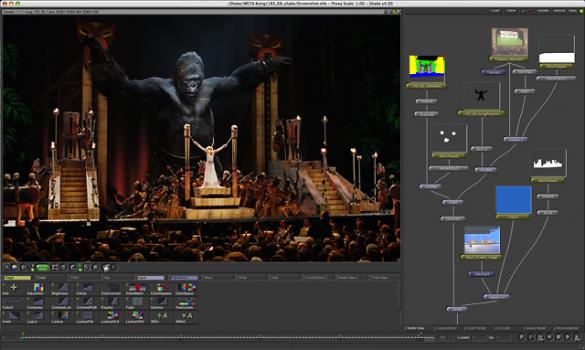
What Coursework is included in a Typical Visual Effects Program? ACR Takes a Look.
| Compositing |
| Concept Development for Visual Effects |
| Digital Visual Effects |
| Introduction to Visual Effects Programming |
| Matte Painting |
| Modeling for Visual Effects |
| Procedural Modeling and Animation Techniques |
| Professional Development for Visual Effects |
| Programming Concepts for Visual Effects |
| Programming Models and Shaders I |
| Survey of Visual Effects |
| Visual Effects-Based Cinematography |
What is Visual Effects?
Visual effects is the process of creating imagery outside of live action shoots. This imagery is typically either too elaborate or even dangerous to create for or capture on film. Some visual effects (also called FX or VFX) combine live action and computer generated imagery, while others are totally computer generated. Some of the most celebrated VFX scenes can be seen in films such as Blade Runner (1982), Terminator 2: Judgement Day (1991), Independence Day (1996), Pirates of the Caribbean: Dead Man’s Chest (2006), Titanic (2007), The Dark Knight (2008), Iron Man (2008), Inception (2010), Interstellar (2014), and Avengers: Infinity War (2018).
What are the Types of Courses for Visual Effects Programs?
Visual effects majors will complete foundation courses and general education courses during the first few years of the program. Examples of foundation studies courses include Drawing: Form and Space, Color: Theory and Application, and Design: 3D Form and Space. General education courses may include Digital Communication, 20th-century Art, Visual Culture and Context, and Speaking of Ideas. English, mathematics, natural sciences, and social and behavioral sciences courses are also available.
Major coursework might look something like this:
- Compositing
- Concept Development for Visual Effects
- Digital Compositing I: The Art and Science of Digital Integration
- Digital Visual Effects
- 3D Color, Lighting and Rendering
- Introduction to Visual Effects Programming
- Matte Painting
- Modeling for Visual Effects
- Procedural 3-D and Shader Programming
- Procedural Modeling and Animation Techniques
- Professional Development for Visual Effects
- Programming Concepts for Visual Effects
- Programming Models and Shaders I
- Survey of Visual Effects
- Visual Effects Studio I
- Visual Effects Studio II
- Visual Effects-Based Cinematography
What Can I Do With a Degree in Visual Effects?
Visual effects artists work primarily in the film and video and game industries. Possible jobs include visual effects artist, animator, concept artist, layout technical director, modeler, texture artist, rigging technical director, art director, FX technical director, lighting technical director, matchmover, matte painter, pipeline technical director, roto artist, rendering technical director, VFX producer, CG producer, VFX supervisor, software developer, game designer, game artist, senior game designer, and game developer.
Schools to Consider:
- San Francisco & Online
- Top 50 Nationally for Animation (#14) - 2021
- Top 50 Nationally for Game Design (#37) - 2021
- Top 50 Nationally for Illustration (#24) - 2021
- Top 50 Nationally for Graphic Design (#38) - 2021
- Winter Park, FL & Online
- Computer Animation - Bachelor's - Online & Campus
- Game Programs - Bachelor's & Master's - Online & Campus
- Graphic Design & Digital Arts - Bachelor's - Online & Campus
- Film & Digital Cinematography - Bachelor's & Master's - Online & Campus
- Mobile Development - Bachelor's - Online
- Simulation & Visualization - Bachelor's - Campus
- Top 50 Nationally for Animation (#11) - 2021
- Top 50 Nationally for Game Design (#10) - 2021
- Top 25 in the South for Graphic Design (#10) - 2021
- Online



